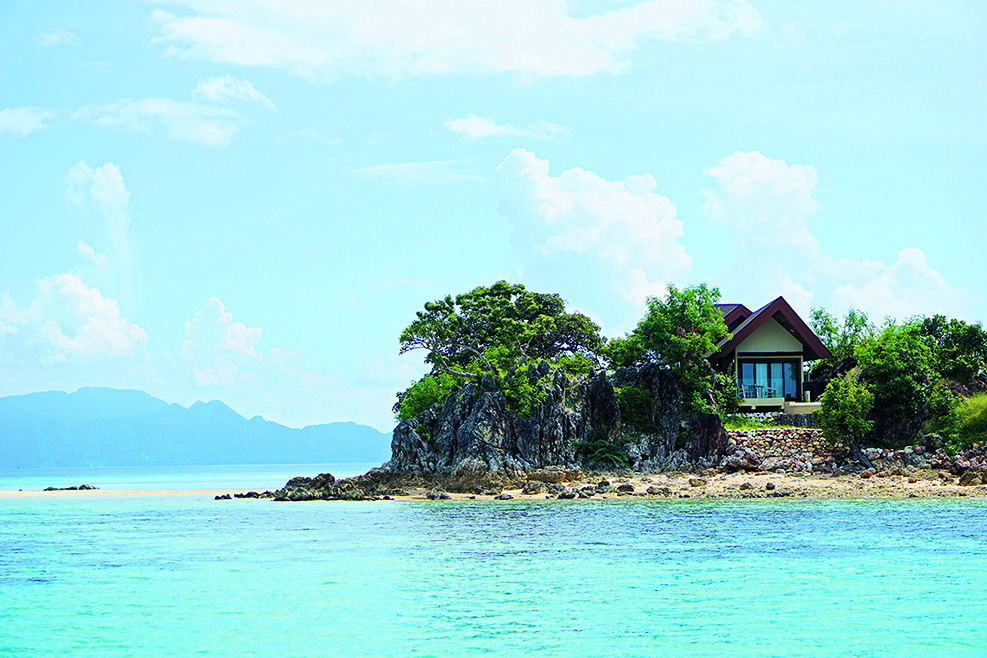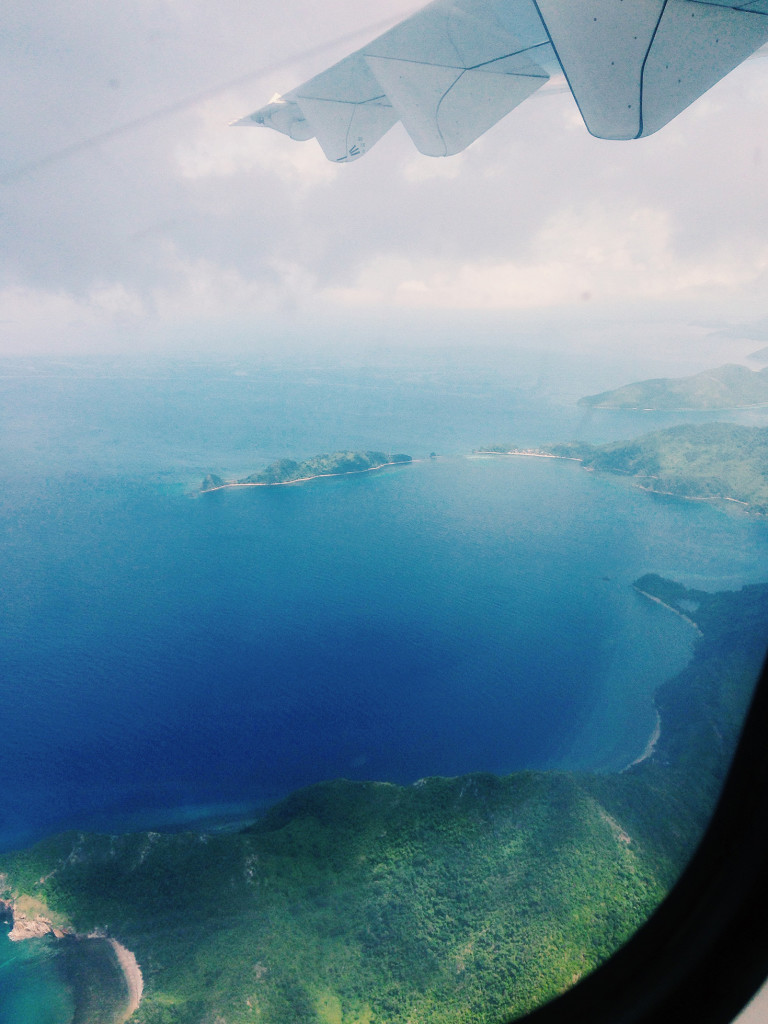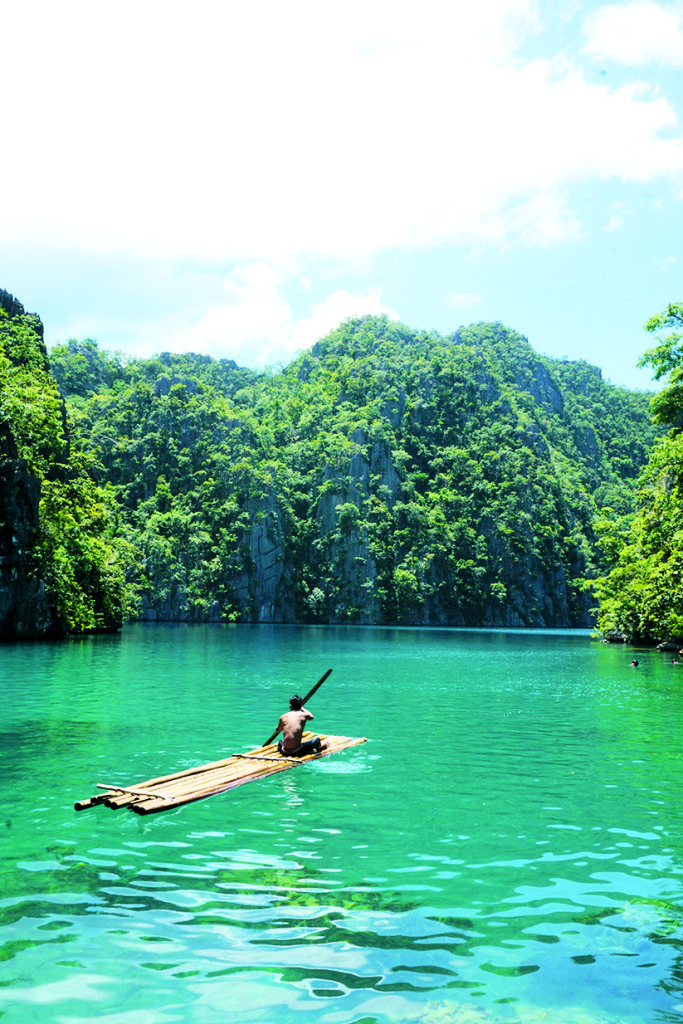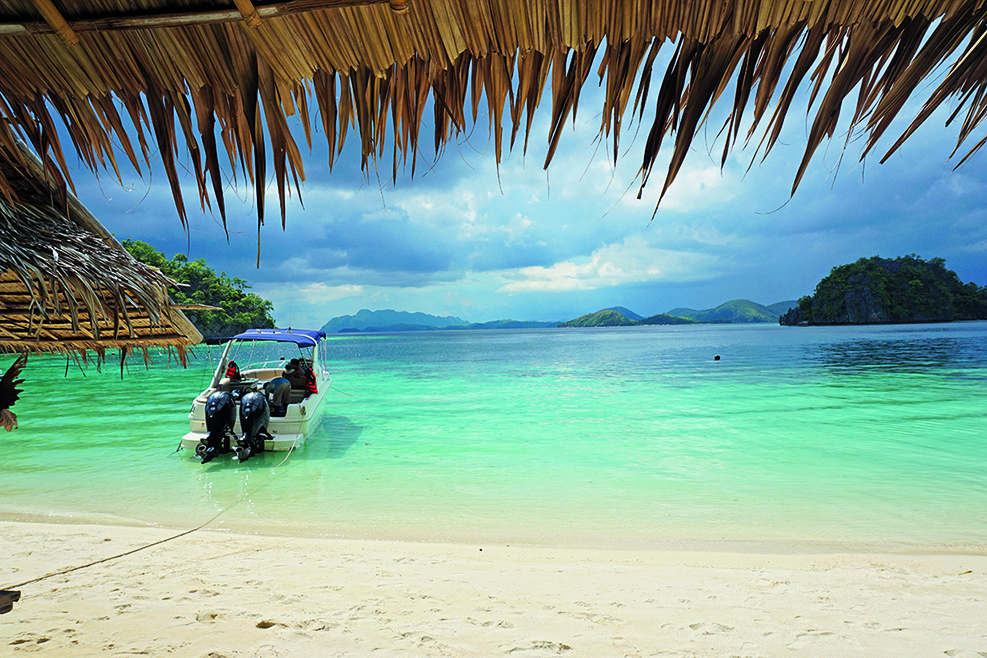Text by MONICA ARANETA TIOSEJO |Â Photography by CHINO CORRALES |
Wandering around an island like Coron, you will learn that “happily ever after†doesn’t always have to be with a special someone; it can also be a “somewhere.â€
Many stories of adventure begin “in a land far, far away.â€
From the plane, a twin-engine turboprop, our creative director, Chino Corrales, and I watched the lush sliver of Palawan jut up from the sea. On the horizon, it looked pristine; closer inspection revealed the rugged topography of jungle-clad mountains.
Our aircraft began its descent on the Calamian Islands, a group of islands north of Palawan. We landed on Busuanga Island, where Coron town, the largest settlement in the Calamian group, is located. From the edge of town, the Two Seasons Coron Island Resort & Spa was still 40 minutes away by speedboat.
What greeted us at the port was a breathtaking view — a land of black limestone karsts rising steeply out of crystalline waters. Coron Island looks like a sleeping giant; and her beauty lies in the fact that she was left alone to enjoy the wonders of a deep sleep.
(The view from our ATR aircraft for Cebu Pacific’s fight from Manila to Busuanga)
The Tagbanua, the indigenous people in the area, are her watchmen and have kept her virginal for thousands of years. They believe the natural environment is a spiritual world. While coping with the advancing forces of modernity, their way of life, that is, to live in harmony with nature, points out that the key to the future survival of our paradisiacal surroundings is with people who carry with them the strategies of the past. This is one of the reasons why travelers flock to the sleeping beauty of Coron — not hoping to open her eyes, but theirs.
Coron has been managed well for this long and its landscape and seascape should stay just as they are. Should they change, they should change only for the better. But how is it possible to improve on God’s design? Two Seasons owner, Jonathan “John†Peñaloza, tries by making one of the neighboring islands a home to an upmarket and environmentally low impact resort that is 100 percent sustainable. In fact, he works tirelessly with the Tagbanua to make sure fishing is not allowed near the resort’s water lease area. Incredibly, marine life has shown positive signs of recovery since Two Seasons opened.
To get to the resort, we passed by a wonderland of jagged crags and secret beaches where nipa huts hugged the sand. It is important to note that you have to travel before the sun goes down. Otherwise, you’ll see nothing. There are no lights to guide you, only the stars, teasing you with their twinkle.
We arrived at the tropical peninsula of Malaroyroy, where Two Seasons is located. Only six hectares of 16 are developed. Ecstasea, our Australasia marine speedboat, stopped at a floating dock made of hard rubber facing a 200 m. stretch of sand. We lurched over the hull to get a better look of the vibrant sea life. Instead of just feeding the fish, we had the opportunity of swimming with them.
(Paradise found in the Twin Lagoons)
Just ahead, manicured paspalum, a salt-tolerant turf grass, carpeted patches of the entrance. I looked around and saw flocks of birds darting towards hundreds of palms, hardwoods and fruit-bearing trees that were originally shipped in and propagated.
Overall, the resort is a dream in ecological architecture, combining luxury, modernity and heritage. But what is most impressive about Two Seasons is its advocacy: eco-sustainability. Like the Tagbanua, Two Seasons believes in being one with nature. Indeed, a stay in one of their 42 bungalows will compel you to be an active steward of the earth. Christine Dayrit, who recommended the resort to us, wrote, “After all, what is the use of amazing developments if they are not preserved for future generations?â€
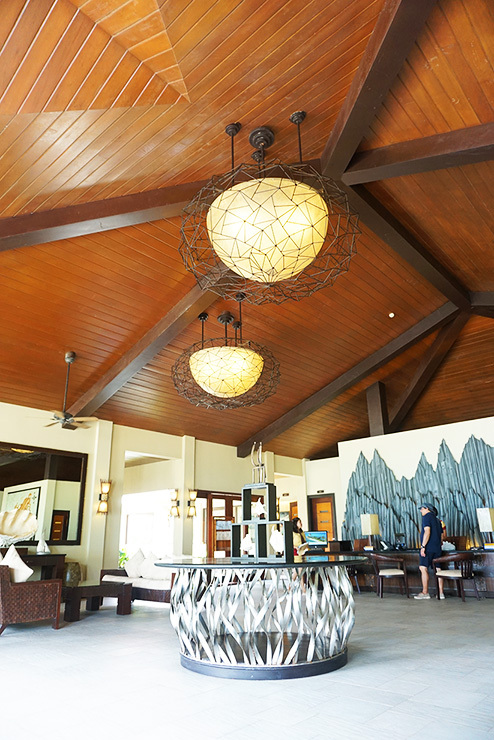
(The lobby at the Two Seasons)
Underwater, God’s bounty is even more evident. Beneath the broad swath of blue, it’s a treasure trove for divers and snorkelers. There are coral gardens, caves, deeply plunging undersea walls and isolated seamounts.
One such protected sanctuary is called Siete Pecados, which means “seven sins.†Legend has it that seven children weren’t allowed to swim by their mother. They disobeyed her and went off by themselves. They all drowned. Afterwards, seven islands appeared as a reminder of their disobedience. This tragic back story notwithstanding, the marine life is amazing. The underwater world is adorned with stunning corals, all the way to the dark depths.
What better place to learn how to dive? Look for Bon Gilbuela, the dive master at the Pawikan Aqua Sports Center, Two Seasons’ recreational hub to check out the wide range of marine activities, which include adventure tours. Since it was our first time visiting, we opted for the ultimate tour, which lasted seven hours, taking us to some of the most desired destinations in Coron, showcasing white-sand beaches, excellent coral, dense rainforests, mangrove swamps and crystal-clear lakes.

(CLOCKWISE FROM LEFT: fresh seafood, dive master Bon Gilbuela, the author)
A short boat ride from the resort will take you to Malcapuya Island and its virgin beach, pierced only by rest huts on the shore. It was acquired by the Henann Group of Resorts and the company will soon build a five-star luxury resort on the property.
There’s the Kayangan Lake, hailed as the cleanest in the country. An aerial shot makes it look like a flawless sapphire cradled in limestone setting. Kayangan Lake is one of Coron’s primary attractions accessible by a steep 10-minute climb.
You must also visit the Twin Lagoons. Unlike Kayangan Lake, the water is blurry, caused by the combination of hot salt water and cold fresh water. We docked in the first of the two lagoons and dove underneath a rock to swim through a three-meter crevice. There’s also a ladder that goes up to a man-made bridge.
Plunge into Barracuda Lake and feel like you’re being steeped in tea. Again, there are the unique layers of fresh, salt and brackish water and dramatic temperature shifts. There is not much fish underwater, but if you’re lucky, you will meet a barracuda.
But I didn’t come for the barracudas; I came for the Japanese naval fleet that was sunk by the Americans in 1944. At the bottom of Coron Bay, wrecks lie rusting on the sea floor fusing with the murky darkness. Because I was a beginner, I could only take my zippy wet suit, gear and new set of skills 22 meters deep to explore Skeleton Wreck, the keel, ribs and stringers of a steel-hulled boat about 25 meters long. At 14 meters, you can swim inside the boat and out over a coral reef.
Our group ended up in Banol Beach, a small sandy shelter from the sweltering heat, where we decided to have a picnic. As we dug into our local fare, I thought of people toiling endlessly to afford a vacation and escape to far off places. Coron is a reminder that everything one could possibly dream of is already within reach.
(Banol Beach)
Green for all Two Seasons
•Two Seasons’ advocacy relies heavily on eco-sustainability. The wood is supplied by an ISO certified company that sells wood sourced only from registered and sustainable tree farms around the world. The bungalows, for example, have wood flooring supplied by Matimco Inc., a green company.
•The Narra Spa and cabanas are made of cogon, to break the modern effect and create a balance of tropical atmosphere. The spa’s structure is made of aged hardwood (Narra, Ipil, Molave and Yakal) materials salvaged from dismantled houses in Ilocos.
•Two Seasons’ desalination plant converts seawater to non-potable fresh water using reverse osmosis and can produce 80 cu. m. of fresh water a day. Waste water and sewage are fed through its sewage treatment plant. The output is clear and clean enough to be diverted back to the bathroom and toilets for flushing. Using a double-piping system, solid waste is discharged in drying beds and later used as fertilizer. There is zero waste discharge and no pollution goes to the sea.
•There’s a cistern tank where treated waste is converted to fresh water and is stored. Some structures have rain catchers for irrigation. The male restrooms use waterless urinals.
•Solar panels are installed for water heaters; and LED and CFL lights are used for energy efficient lightings.
•The resort says “no†to plastic packaging and dispensers are used for refills. Toiletries are packed in recyclable materials.
•The employees continuously plant hardwood and fruit bearing trees to attract more birds.
•The drain system was designed to prevent siltation, and above all, proper waste segregation is strictly implemented.
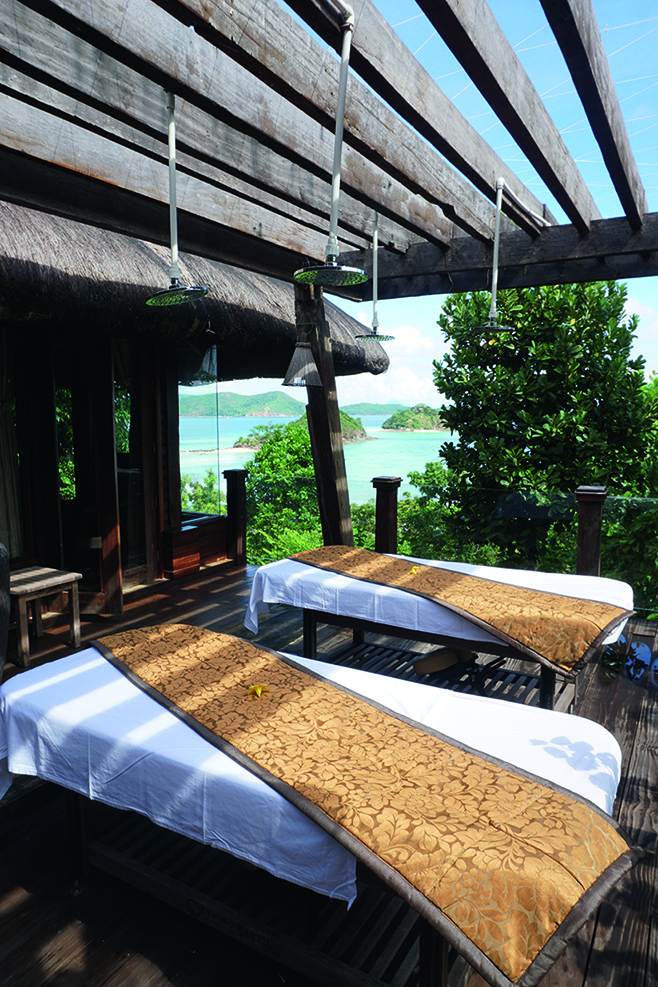
(The Narra Spa at the Two Seasons Coron Island & Beach Resort)

